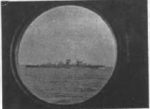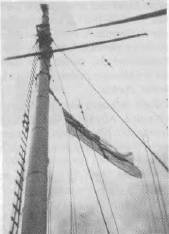- Author
- Prior, Russ
- Subjects
- History - WW2
- Tags
-
- RAN Ships
- HMAS Canberra I, HMAS Shropshire, HMAS Australia II, HMAS Sydney II
- Publication
- March 1995 edition of the Naval Historical Review (all rights reserved)
January, 1941 was the month when problems caused by German raiders in the Indian Ocean increased. The famous armed merchant cruisers ATLANTIS and PINGUIN were now joined by the pocket battleship ADMIRAL SCHEER which entered the Indian Ocean and on 6th January was to the south of Madagascar.
ATLANTIS had been operating there since May 1940 steadily increasing her list of victims that eventually totalled twenty two. She completed the longest war cruise in naval history.
Then came PINGUIN in August 1940 whose record of ships captured and sunk became an all time record for both World Wars. Early October 1940, she captured the Norwegian tanker STORSTAD. converted it into a minelayer (the first time ever for such a conversion) and renamed it PASSAT. They then mined the important shipping routes to Australia and New Zealand as well as the entrances to Sydney, Hobart and major ports in South Australia. The two ships returned to the Indian Ocean where PINGUIN sank the NOWSHERA off India then MAIMOA and PORT BRISBANE west of Fremantle in November. HMAS CANBERRA picked up twenty seven survivors of the PORT BRISBANE who had escaped in three boats in the night action.
On 14th February 1941, about a thousand miles east of the northern tip of Madagascar, ADMIRAL SCHEER met ATLANTIS with her sister ship TANNENFELS of the Hansa Line and now a supply ship which would take the prisoners of ATLANTIS and ADMIRAL SCHEER to the German controlled waters of Europe. There were also two prizes of ATLANTIS, the British freighter SPEYBANK and the fast Norwegian tanker KETTY BROVIG. The latter had been captured in a night action on 2nd February and carried 4,500 tons of diesel oil and 6.000 tons of other fuel. Four days later, ADMIRAL SCHEER captured the British tanker BRITISH ADVOCATE and sent it to meet ATLANTIS. She then sank the Greek steamer GREGORIOS carrying war material under Red Cross equipment. A week later, ADMIRAL SCHEER caught the freighter CANADIAN CRUISER which was a Canadian ship posing as a neutral American. The latter was able to send out a distress signal before being sunk.
The light cruiser GLASGOW was instructed to investigate and on 22nd February, her aircraft sighted the ADMIRAL SCHEER about 200 miles north of Madagascar. The C.-in-C. East Indies also detached other units further away. These were heavy cruiser AUSTRALIA, light cruiser HAWKINS from a convoy crossing the Equator, light cruiser EMERALD from a convoy further south, the aircraft carrier HERMES and light cruiser CAPETOWN from Mombasa and heavy cruisers CANBERRA and SHROPSHIRE from a more southerly position. Due to failing light, GLASGOW’S plane lost contact and the ADMIRAL SCHEER was able to escape during the night. On 26th February at Port Victoria, Seychelles, CANBERRA refuelled from RFA APPLELEAF with HERMES and EMERALD nearby, then steamed for a rendezvous with LEANDER east of the Chagos Archipelago which was later changed to a position nearer the Equator. The meeting took place at 1600 on Sunday 2nd March.

Photo: R. Prior
Several days earlier, on 27th February, LEANDER had sunk the small Italian armed merchant cruiser RAMB 1 and rescued 103 survivors. LEANDER was hit in her funnel.
Captain Bevan of LEANDER, who was senior, decided that a reconnaissance of the Saya de Malha Bank could be achieved if both cruisers operated separately. They parted company at 0430 on 4th March.
ACTION STATIONS!

Photo – R. Prior
AT 1628, CANBERRA’S masthead lookout sighted smoke on the starboard bow and soon afterwards two masts and a funnel. Captain Farncomb immediately changed course towards the ship and increased speed. CANBERRA’S aircraft at 1636 advised “Two unknown types of ships bearing 117 degrees 45 miles from position”. Shortly after, they were reported as an armed raider and a tanker.
At 1654, the tanker altered to the southward and the other ship to the northward. Both ships ignored orders by HMAS CANBERRA fired a salvo ahead of the merchant ship and this warning to stop was also ignored. Captain Farncomb then decided to engage the enemy and opened fire at 1702 at about 21,100 yards. Under the impression that he was engaging a raider, he manoeuvred to keep the range over 19,000 yards.
The enemy was seen to be burning abaft the bridge at 1716 and the fire was checked. This was initially due to scuttling action started at the time of the warning salvo.




